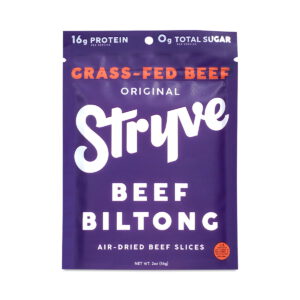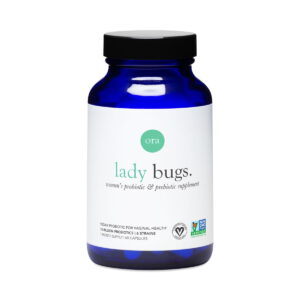- Understanding meal prep
- Benefits of healthy choices
- Essential tools for meal prep
- Planning your meals effectively
- Incorporating variety and nutrition
- Staying motivated and overcoming challenges
When it comes to grocery shopping, whether you’re looking for healthy choices or budget-friendly options, having a strategic approach can make all the difference. Begin by making a list: this will help you stay focused and avoid impulse buys. A well-planned list can streamline your shopping experience, ensuring that you gather all the essentials for your meal prep while keeping your pantry stocked with nutritious ingredients.
Shopping for groceries involves understanding the categories of food that cater to various dietary needs. Here are some tips to keep in mind:
- Fresh produce: Always fill your cart with a colorful array of fruits and vegetables. Aim for organic options when possible, as they are free from harmful pesticides and chemicals. Local farmers’ markets can be a great source of fresh, seasonal ingredients that support local agriculture.
- Whole grains: Stock up on brown rice, quinoa, and whole-grain pasta. These staple foods are not only satisfying but also provide vital nutrients for energy, making them excellent choices for fitness enthusiasts.
- Plant-based proteins: For those adopting a vegan lifestyle or anyone looking to reduce meat consumption, options like lentils, chickpeas, and tofu are fantastic sources of protein. Consider trying out different brands or types to find the ones that fit your taste preferences.
- Frozen foods: Don’t overlook frozen fruits and vegetables—they’re often just as nutritious as fresh ones and can save you from wasting food. Just make sure to choose products without added sugars or sauces.
- Healthy snacks: Look for nuts, seeds, and whole-grain snacks. These provide energy and are great for on-the-go munching, especially if you’re balancing a busy work schedule with personal health goals.
When shopping online, ensure you choose reputable grocery websites. Read reviews and check safety ratings before dropping your items into the virtual cart. Always verify that the delivery service ensures proper temperature control for perishable items. Keep an eye out for deals and bulk-buy options to save money, but ensure that you will use everything you buy to avoid food waste.
Make it a habit to check the expiration dates and packaging integrity, especially for canned or packaged goods. Prioritize brands that are transparent about their ingredient sourcing and processing methods. Finally, when you go in-store, don’t hesitate to ask for help from grocery staff regarding ingredients or alternative options—most are eager to assist and share their expertise.
Your grocery shopping experience should be enjoyable and empowering, reflecting your commitment to a balanced lifestyle. With these strategies, you can confidently navigate through aisles or online catalogs, making meal prep an enjoyable process.
Benefits of healthy choices
Healthy choices play a pivotal role in achieving overall wellness and can significantly enhance the benefits of meal prep. By making informed decisions about what we consume, we can influence our physical health, mental well-being, and even our emotional state. Here are some of the key benefits associated with embracing healthy choices in the context of meal prep:
1. Nutrient Density: Opting for whole, minimally processed foods ensures that each bite is packed with essential vitamins, minerals, and other nutrients. Foods like fresh fruits, vegetables, whole grains, and lean proteins contribute to a balanced diet, reducing the risk of chronic diseases.
2. Weight Management: Engaging in meal prep allows individuals to control portion sizes and caloric intake. Healthy choices, such as salads with lean proteins or whole grain wraps, can lead to a balanced diet that helps maintain a healthy weight.
3. Increased Energy Levels: Choosing nutrient-dense foods helps stabilize blood sugar levels, providing a steady source of energy throughout the day. Foods high in fiber, such as oats or legumes, can improve digestive health and keep you feeling full longer, reducing the likelihood of reaching for unhealthy snacks.
4. Improved Mental Health: Research indicates that there is a strong connection between diet and mental well-being. Consuming foods rich in omega-3 fatty acids, antioxidants, and vitamins can enhance mood and cognitive function. Incorporating a variety of colorful fruits and vegetables in meal prep can improve overall brain health.
5. Enhanced Immune Function: A well-rounded diet filled with nutritious foods supports the immune system. Meals high in vitamins C and D, zinc, and antioxidants can bolster the body’s defenses against infections and illnesses.
| Benefit | Healthy Choices | Meal Prep Example |
|---|---|---|
| Nutrient Density | Whole foods like spinach, quinoa, and salmon | Quinoa salad with mixed veggies and grilled salmon |
| Weight Management | Portion-controlled meals with balanced macros | Meal prep bowls with brown rice, roasted chicken, and broccoli |
| Increased Energy Levels | High-fiber foods such as oats and beans | Overnight oats with chia seeds, fruits, and nuts |
| Improved Mental Health | Foods rich in omega-3s like walnuts and flaxseeds | Chia pudding topped with walnuts and berries |
| Enhanced Immune Function | Fruits and vegetables high in vitamins and antioxidants | Stir-fry with bell peppers, kale, and ginger |
Incorporating these healthy choices into meal prep not only helps streamline your nutrition but also fosters a lifestyle that values health and well-being. Such planning allows individuals to develop better eating habits, making it easier to resist temptations and make consistent, healthful decisions throughout the week. As these benefits become more apparent, individuals may find greater satisfaction and enjoyment in their meals, reinforcing their commitment to a balanced lifestyle.
Essential tools for meal prep
When preparing for grocery shopping, whether in-person or online, certain tools can transform this chore into an engaging and productive activity. First and foremost, always utilize a well-structured shopping list tailored to your meal prep needs. This list should prioritize healthy choices and ensure that you have all necessary ingredients on hand. Here are some essential tips to enhance your shopping experience:
- Plan Ahead: Before you head to the store or start browsing online, draft your meal plan for the week. Identify recipes you want to try and gather the ingredients to avoid last-minute scrambles. This will not only save you time but also prevent unplanned purchases that don’t align with your health goals.
- Buy Local: When possible, support local farmers and vendors. Fresh, seasonal produce not only tastes better but is often more nutritious. Visiting local farmers’ markets can lead to great finds and often, better prices than conventional grocery stores.
- Seasonal Choices: Understanding what fruits and vegetables are in season can help you choose the freshest, most affordable items. Seasonal produce not only tastes better but typically contains more nutrients, giving you the best value for your health and budget.
- Check for Sales: Keep an eye on weekly sales flyers or use grocery store apps to track discounts. Stocking up on staples like canned beans, whole grains, or frozen vegetables during sales can help manage your budget while maintaining a well-stocked pantry.
- Online Shopping Safety: When shopping online, be vigilant. Always shop from reputable sites and read customer reviews. Pay attention to how perishable items are handled during delivery. If an email or deal looks too good to be true, it likely is—trust your instincts!
- Ingredient Checks: Whether shopping in-store or online, rigorously check expiration dates and product packaging. Avoid items with dented cans or broken seals. For organic products, verify labels to ensure you’re making true healthy choices.
- Budget-Friendly Options: Look for generic or store brands that often offer the same quality at a lower price. Items like oats, grains, and even canned goods usually taste just as good as name brands but at a fraction of the cost.
- Pre-Packaged Versus Fresh: While pre-packaged meal kits can be convenient, they often come with a higher price tag. Opt for fresh ingredients that you can portion and prepare at home for significant savings.
To keep your meals exciting, every now and then, try a new ingredient or explore unfamiliar sections of the store. Incorporating new flavors and textures will not only enhance your meal prep process but also keep you motivated on your health journey. Embrace the opportunity to balance your nutrition with creativity!
Planning your meals effectively
Planning meals effectively requires a thoughtful approach that considers not only the ingredients in the dishes but also the overall structure of your week. Start by setting aside time to outline your meals for the week ahead, considering both lunch and dinner, and any snacks or quick breakfasts that can support your wellness goals.
When deciding what meals to prepare, reflect on your own preferences and any dietary restrictions you may have. Create a balanced meal plan that includes a variety of proteins, grains, and plenty of fruits and vegetables. Diversifying ingredients ensures you’re getting a broad spectrum of nutrients necessary for optimal health. For instance, you might include quinoa bowls loaded with roasted vegetables and chickpeas one night, followed by a lean turkey stir-fry served with brown rice the next. Planning dishes that share common ingredients can also reduce waste and keep your shopping list concise.
Consider using a calendar or planner to map out your meals. Visualizing your week can provide clarity and help you stay accountable. Additionally, make note of any family events or social occasions that may interfere with your usual meal prep schedule, allowing you to adjust your plans accordingly.
Another effective strategy is to designate a specific day for meal prep, often referred to as “meal prep Sunday.” Dedicate a few hours to batch-cook your grains, proteins, and roasted vegetables in advance. This not only saves time during the week but also allows for creativity with leftovers. If you have roasted chicken from one meal, consider shredding it for a salad or using it in a wrap for lunch the next day.
When portioning out meals, rely on glass containers divided for ease of access and to prevent sogginess. Each container can reflect a balanced approach by including a lean protein source, grains, and a variety of colorful vegetables. This prevents monotony and keeps you engaged with your meal choices.
Finally,
“Meal prep is not just about what you eat; it’s about what you choose to omit.”
This mindset can help you prioritize healthful options while being conscious of the types of foods that undermine your wellness journey. By planning your meals effectively and staying intentional about your choices, you set yourself up for success in maintaining a balanced and nutritious lifestyle.
Incorporating variety and nutrition
Incorporating a variety of foods into your meal prep is essential for ensuring that the meals you prepare are not only nutritious but also enjoyable. The balance of different food groups helps promote better health outcomes and keeps your palate engaged. One of the most effective ways to achieve this variety is by embracing the colors of the food spectrum. The more colors you incorporate, the greater the range of nutrients you will consume. For instance, adding vibrant red tomatoes, leafy greens, orange bell peppers, and purple eggplant to your meals not only brightens the plate but also provides an array of vitamins, minerals, and antioxidants.
When considering your meal prep, think beyond just fruits and vegetables. Whole grains, lean proteins, and healthy fats should also play a significant role in achieving a well-rounded diet. Opt for different sources of protein, such as poultry, fish, legumes, and plant-based alternatives, to ensure you are getting diverse amino acids. Whole grains like quinoa, brown rice, and farro can be interchanged to provide different textures and flavors, preventing your meals from becoming monotonous.
Experimentation is a vital component of incorporating variety. Try using herbs and spices to creatively adjust flavors without adding excessive salt or sugar. Fresh herbs such as basil, cilantro, or parsley can elevate the taste of dishes, while spices like cumin, paprika, and turmeric can introduce exciting new twists. Get adventurous and pick a new ingredient each week to experiment with in your meal prep—perhaps a grain you’ve never tried or a vegetable that’s caught your eye at the market.
Another consideration is meal texture, which can significantly impact how satisfying your meals feel. Mixing crunchy, soft, and creamy components in your dishes enhances the overall eating experience. For example, add nuts or seeds to a salad for crunch, include roasted vegetables for a hearty touch, and a light vinaigrette to bring everything together. Pairing contrasting textures provides a fulfilling culinary journey that supports your cravings while maintaining the balance of a healthy diet.
Individual preferences and dietary restrictions can also guide your choices. It’s essential to consider the tastes and needs of anyone who shares your meals. Pay attention to local and seasonal produce, which not only influences your meal variety but also supports sustainability by reducing the carbon footprint associated with food transport. In this manner, your meal prep can reflect personal preferences while also embracing global culinary influences.
With these strategies, the process of meal prep can become an enjoyable exploration rather than a tedious task. Each week presents an opportunity to learn, adapt, and refine your meals, enhancing your understanding of nutrition and flavor. Invite variety into your routine—it’s a path to making healthier choices that excite your taste buds and nourish your body.
- What is meal prep and why should I do it?
- Meal prep involves planning and preparing meals ahead of time to save time, reduce stress, and encourage healthy eating. By cooking in advance, you have ready-to-eat, nutritious meals at your fingertips, which can help you make better dietary choices throughout the week.
- How can I incorporate more variety into my meal prep?
- To add variety, explore different vegetables, proteins, and grains. Change your cooking methods, use various herbs and spices, or experiment with international recipes to keep meals exciting and flavorful.
- What are some healthy snacks I can prepare in advance?
- Nutritious snacks include sliced veggies with hummus, energy bites made from oats and nut butter, or yogurt parfaits with fruit and granola. These can be made in batches and stored for easy access during the week.
- How do I avoid food waste when meal prepping?
- Plan your meals around ingredients that share common elements and be mindful of portion sizes. Use perishable foods earlier in the week, and consider freezing any leftover meals for later consumption.
- What containers are best for meal prep?
- Glass containers with tight-sealing lids are ideal for meal prep as they preserve freshness, are microwave-safe, and environmentally friendly. Look for various sizes to accommodate different meal types and portions.
- Can meal prepping help with weight management?
- Absolutely! By preparing meals in advance, you can control portion sizes and ensure you’re making healthy choices. It minimizes impulsive eating and encourages intentional meals aligned with your dietary goals.
- How do I stay motivated to continue meal prepping?
- To stay motivated, try setting short-term goals, involving friends or family in the process, and regularly exploring new recipes. Celebrating small successes and noticing the positive impact on your health can also fuel your passion for meal prep.
Staying motivated and overcoming challenges
Grocery shopping can feel overwhelming, especially when juggling a busy lifestyle while trying to make healthy choices. However, with a few tricks up your sleeve, you can turn your shopping trips into enjoyable experiences that keep you motivated and empowered in your quest for balanced nutrition.
First and foremost, always ensure you have a clear grocery list before you venture out. This not only keeps you focused but also curbs impulse buying, which can often lead to unhealthy choices. Categorize your list into sections such as produce, grains, proteins, and snacks to streamline the shopping process. For instance:
- Produce: Opt for a variety of fruits and vegetables. Think about seasonal produce to support local farmers and to enjoy the freshest flavors. Try mixing things up—choose leafy greens like kale or spinach, vibrant bell peppers, and seasonal fruits like berries or apples.
- Grains: Stock whole-grain options like quinoa, farro, and brown rice. Consider buying these items in bulk to save money while ensuring you have healthy staples on hand for meal prep.
- Proteins: Plant-based proteins such as chickpeas, lentils, and black beans are not only budget-friendly but also perfect for vegans and those looking to decrease their meat consumption. For lean meat eaters, opt for chicken breast, turkey, or fish rich in omega-3 fatty acids.
- Snacks: Choose healthy snacks such as nuts, seeds, and whole-grain crackers. These options keep your energy levels up, especially on busy days.
When shopping online, prioritize safety and quality. Stick to well-known grocery delivery services that have positive reviews. Always double-check that perishables are shipped with adequate cooling methods, ensuring that your avocados and greens arrive fresh. Look for sales, but rather than buying items in bulk you may not use, focus on pantry staples that can be stored long term, like dried beans or whole grains.
Don’t forget to pay attention to ingredient labels. Many products may claim to be “healthy,” but can often be loaded with sugars, sodium, or preservatives. Opt for products with fewer ingredients and those you can recognize. For example, when selecting snacks, choose those with whole ingredients like almonds, dates, or oats rather than processed bars packed with additives.
When it comes to local food, consider joining a Community Supported Agriculture (CSA) program. These subscriptions not only give you access to fresh produce each week but also encourage you to explore new fruits and vegetables that may inspire new meal prep ideas. For example, you might receive a beautiful bunch of beets and discover how delightful roasted beets pair with quinoa and arugula.
Finally, while planning meals, try to include a few versatile ingredients that can be used across multiple dishes. For instance, if you buy a bulk pack of sweet potatoes, you can utilize them in a variety of ways: bake them as a side, mash them with chickpeas for burgers, or dice them up for a colorful veggie bowl. This not only reduces waste but also keeps your meals interesting, promoting that essential balance in your diet.
By integrating these strategies into your grocery shopping routine, you can not only enhance your meal prep practices but also establish a more flavorful and nutritious lifestyle, all while staying within budget.
New Customers Offer!
Free Gift for the new customer
$24 Value, When You Subscrib Visit Thrive Market











